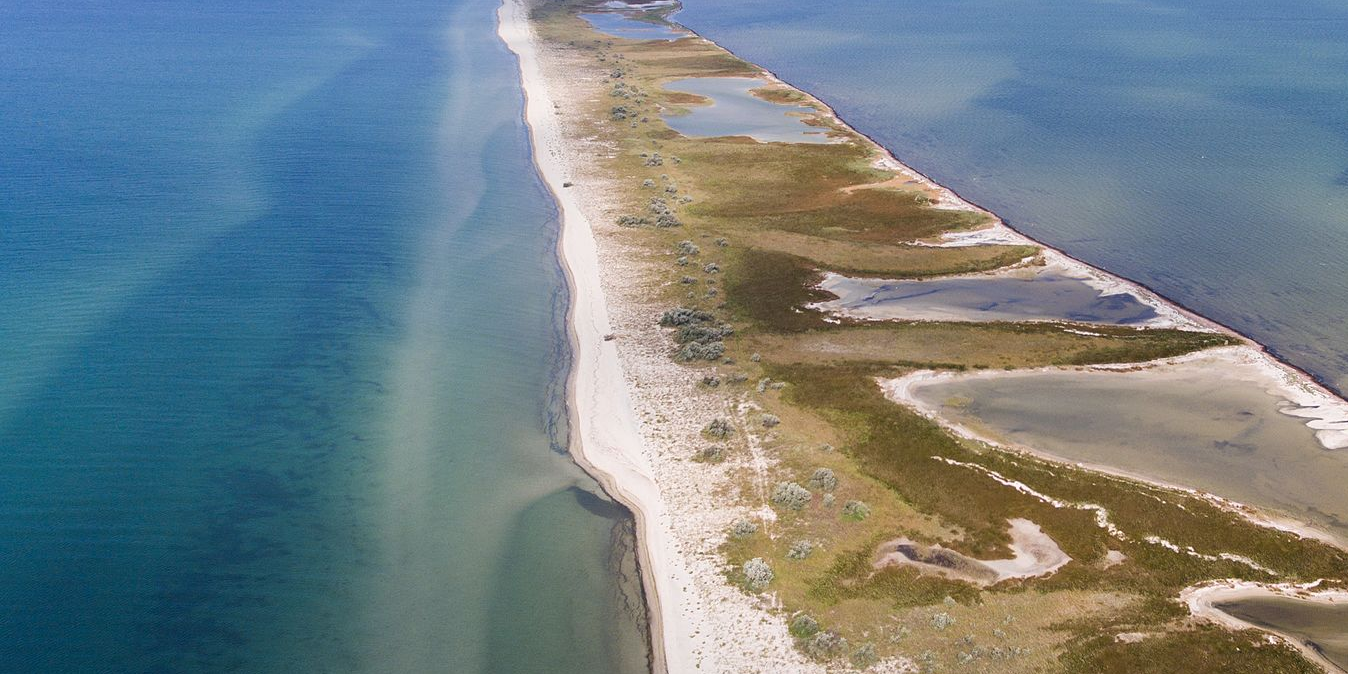The biggest storm in at least the last 100 years occurred in the Black Sea at the end of November. It caused damage to the infrastructure of the temporarily occupied Crimea, and limited the ability of the occupiers to use their navy (which we are very happy about). However, damage was also caused to Ukrainian nature conservation areas.
The storm, in fact, washed away Dzharylgach and Tendra spits. Satellite images show that the natural disaster destroyed the entire spit landscape. Waves broke through 7 gullies on Tendra, and 3 on Dzharylgach spit. Obviously, all the animals and plants wintering here were wiped out.
All the habitats along the entire sea coast of Dzharylgach were destroyed, and the sandy beach expanded by additional 70-100 m. Apparently, even Gustave Eiffel’s lighthouse stands among the sea now.
Details:
The northern coast spits of the Black and Azov seas are a unique natural phenomenon.They “rise” from the bottom of the sea to the surface under the influence of waves and sea currents. The existence of so called above-sea landscapes is possible due to the long-term, unchanging movement of waves.
Because of this regime valuable natural habitats were formed. Bounded by Tendra spit, Tendra bay includes islands and shallow waters which are an important area for wintering and migration of waterfowl. The area has been a part of the Black Sea Nature Reserve since 1927. It was the first to receive a UNESCO certificate in Ukraine.
Tendra and Dzharylgach spits are habitats of the reptiles included into the Red Data Book of Ukraine: the yellow-bellied snake, the steppe viper, and the sand lizard. Previously, there were found some amphibians here: the common spadefoot, the green toad (protected by Bern Convention). The war and the storm could cause irreparable damage to the populations of these animals.
The vegetation of Dzharylgach and Tendra spits have been formed by typical seaside species: Black Sea mustard (Cakile maritime subsp. euxina), mammoth wild rye (Leymus racemosus), Colchis sedge (Carex colchica), sand wormwood (Artemisia arenaria). Moreover, there are some species from the Red Data Book, for example, sword-leaf dogbane (Apocynum venetum) and the Red List of Kherson region: sea holly (Eryngium maritimum), and Ephedra distachya) there. The southern shore of the spit, which overlooks the Dzharylgach bay, is formed by salty lakes and small bays.
They are separated by patches of wet salt flats and mounds overgrown with reeds. All of them are represented by five types of the habitats protected by Resolution 4 of Bern Convention (A2.5 Coastal saltmarshes and saline reedbeds, A2.61 Seagrass beds on littoral sediments, B1.1 Sand beach driftlines, B1.3 Shifting coastal dunes, X02 Saline coastal lagoons).
As almost all the shores have been built up or occupied by recreational infrastructure, these two spits remain the last wild areas of the sea coast with open beaches available for bird nesting and resting during migrations. More than 100 km of wild Black Sea coastline can be seen only on the territory of the Chornomorskyi Reserve and Dzharylgach National Park.
Even if only a 100-meter coastal strip was damaged (on both spits together), it means that the storm destroyed 10,000 hectares of natural area. Nowadays, both spits have actually been washed away.
Eventually, sea waves will restore the landscape maintained for many millennia. However, we are talking about the last untouched landscapes, which are shelters for many rare species. The losses caused by the storm are really devastating for nature.
The storm, like any increasing peak indicators of weather phenomena, is a consequence of global climate change caused by plowing, deforestation and the use of fossil fuels. Perhaps, the storm is the first event in the new reality of changed climate.
On the other hand, the emergence of the gullies on the Dzharylgach spit will prevent the water in the Dzharylgach bay from silting up, that would be very dangerous for many rare species, from seagrasses to crabs and cetaceans.







